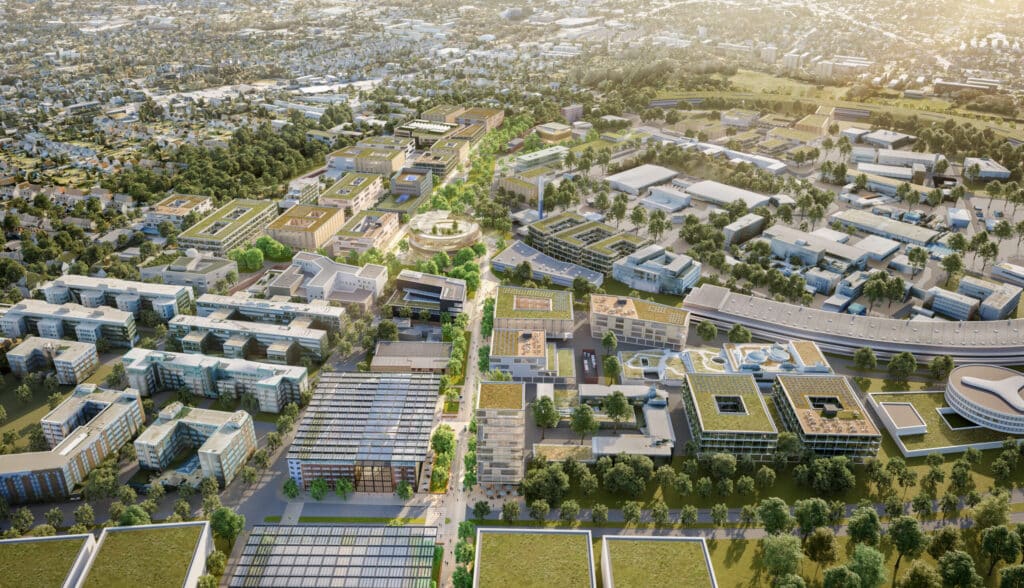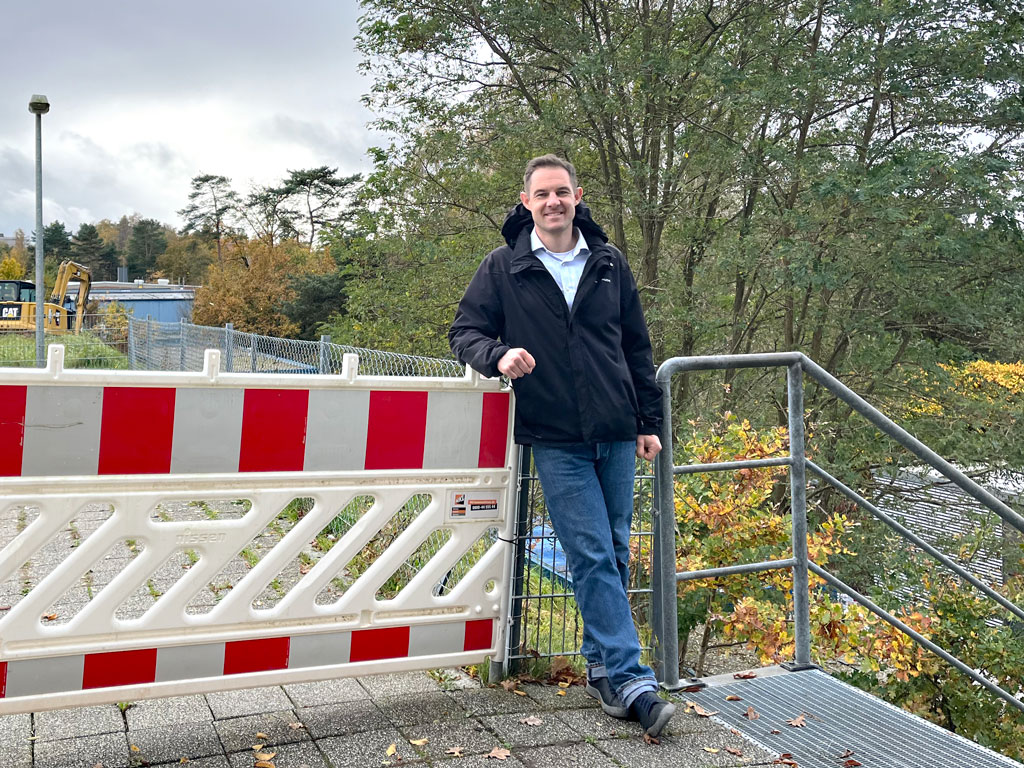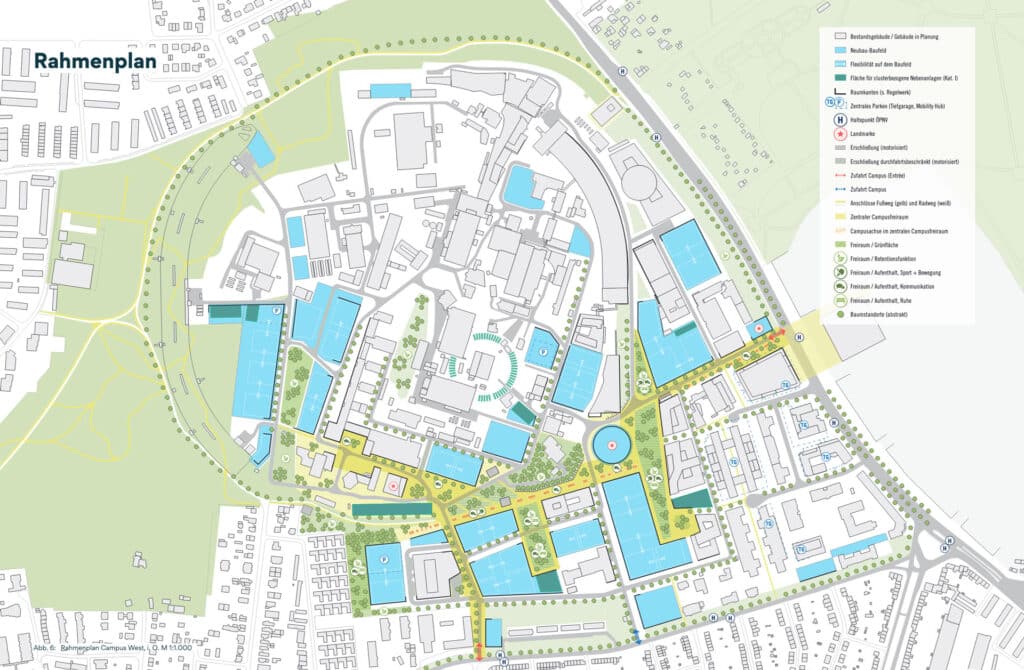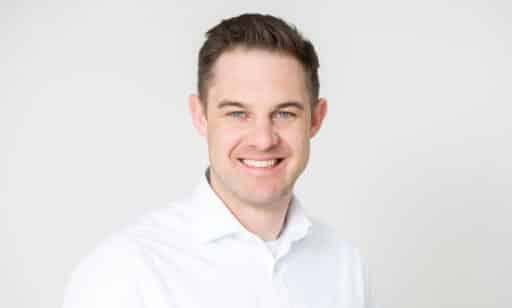
© moka-studio
About three times as large as the Inner Alster is the DESY - Kernareal in the Science City: 50 hectares (ground area). This is where the FLASH and PETRA III research facilities, which are hundreds and thousands of meters in size, are located. And from there, the European XFEL extends into the Hamburg metropolitan region. People from all over the world use this research environment for experiments to research physical, chemical and biological questions.
Thousands of people work on the research campus in scientific, technical and other professions. The excellent scientific expertise, various services and tools as well as computing capacities on site are in demand worldwide.
In order to ensure flexibility for future uses for future generations, the Science City partners are jointly developing their infrastructure for research and teaching. Tobias Piekatz heads DESY the project »Campus Infrastructure«. In the interview he gives an insight into his unusual work.

© DESY, Gesa Harms
What makes the job of a project manager at Science City Hamburg Bahrenfeld special?
We are shaping the future of science in Hamburg and therefore also the city. I find that very exciting.
What qualities are needed to make the research campus fit for the future?
Creativity, resilience and staying power. As a rule, urban developments take at least 15 years - enough time for many "ups and downs".
Is there a challenge that requires special creativity?
Yes, almost every one... No, seriously: we always try to find the best solution for every issue. For example, the future users of a building often don't know exactly what they need at the planning stage. Then you have to talk to each other a lot during the planning process and find out how to solve the various issues.
What is DESY's biggest goal in campus development?
We want to ensure that future generations have a wide range of options for using the campus. I also see the campus development as an opportunity to realize the great ideas of DESY -employees. They know the research facilities particularly well because they designed and built them and are responsible for their operation. They know what cutting-edge research needs on site in practice. Our aim in planning is to provide highly attractive areas for this purpose with a view to the future. In doing so, we think ahead to the infrastructure and media planning of "tomorrow and the day after tomorrow".
Does the weather play a role when it comes to new green spaces on the DESY -Campus?
Yes, the weather - or more precisely: climate impact adaptation - is now an elementary component of urban and structural planning. For example, heavy rainfall events occur much more frequently and with greater intensity than just a few decades ago. We therefore need to think about how we will deal with all this water in the future. One solution is green roofs, which retain water for longer so that the load on the sewage system is delayed. We are also planning large open spaces, which we call "green fingers". During heavy rainfall, they will fill up with water and then allow it to seep away. Our solar-powered pump system is also in operation with foresight. It will pump the rainwater retention basins on the site empty as early as possible to create enough capacity to absorb the water.

ASTOC, WES, Happold office
What significance does partnership have in the growing Science City?
For example, I am thinking of PETRA IV : In this project, we are pursuing the expansion of a large-scale research facility, which will be partly located outside our current DESY site. This makes things a little complicated. But for Germany as a research location, PETRA IV an important future project. That is why the partners in the Science City are motivated to work together with DESY Finding solutions. If, for example, an experimental hall several hundred meters long is to be built underground, no one player can act alone - this can only be achieved if everyone gets involved. The collaboration between the Science City partners has a very positive overall effect on the further development of the campus and the research facilities. Many things become easier when experts can work together across the boundaries of authorities and institutions. I think that together we always create great solutions - also because everyone contributes their experience.
Why is it important to set up a center for visitors on the research campus?
World-renowned research is carried out on the campus. It is largely financed by German society. That is why we want to DESYUM Awaken fascination for the natural sciences and show what DESY research so valuable for society. In the DESYUM -Exhibition allows guests to understand in a creative way which scientific questions and discoveries are important and where they encounter them in everyday life. We are creating a lively place for exchange, encounters, education and events on the research campus.
To what extent is the DESY -Campus be able to grow in the future when the buildable area is fully utilized?
On the one hand, we still have a lot of peripheral areas that are unused: With the recently completed framework plan, we were able to demonstrate around 65,000 square meters of usable area. Even with the new planning law for PETRA IV There are other large areas with potential. We have gained space for research facilities and other buildings.
The inner area of the campus has become quite cramped since the 1960s. Here, we can combine uses and also "spatially stack" them in order to open up new areas in the older campus areas. Overall, there is literally "room for improvement" - if necessary, we could expand existing buildings if space is required. Spatial restructuring must always be project-related because it is usually very cost-intensive.
How important is accessibility in DESY's future campus infrastructure?
The research center DESY is a public building contractor. We are subject to federal guidelines when we plan buildings. The federal government has committed itself to designing all buildings as barrier-free as possible. Accessibility is therefore an integral part of all planning for new buildings. Existing buildings that have been built on campus since the 1960s unfortunately cannot always be retrofitted to meet current standards.
Contact us

© DESY, Marta Mayer
Tobias Piekatz
Project manager "Campus infrastructure"
© DESY, Marta Mayer
Built on sand and always changing
About the historical origin of the DESY -Campus
In 1959, the federal government and the city of Hamburg made it possible to build the German Electron Synchrotron DESY on the site of a former parade ground. At that time, personalities from politics, research and teaching worked together to make Hamburg a magnet for international basic research. The underground research facility DESY - a 300-meter-long ring accelerator - went into operation in 1964. This was how the development of Hamburg Bahrenfeld for regional, national and international research began.
From 1968, the city of Hamburg used soil from the construction of the Elbe tunnel to create a local recreation area on the remaining area of the old military site. A hilly landscape park was created, which still borders DESY's campus area today. The park was named after a researcher who was the first to describe nuclear fission in a letter to Otto Hahn: Lise Meitner.
Since 2019, citizens have been involved in the planning of Science City Hamburg Bahrenfeld alongside government stakeholders. At the same time, measures to promote innovation, start-ups and offers for companies to use the research infrastructure are increasingly opening up the campus world to the outside world.
Around 60 years ago, players from various political and scientific fields joined forces to develop Hamburg Bahrenfeld as a location for research and teaching. The joint commitment of many social players will continue to strengthen Science City in the future and significantly advance Hamburg's development into a science metropolis.
